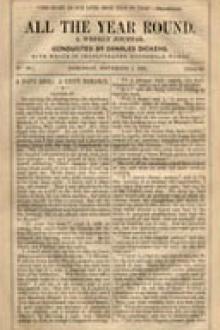Struggles and Triumphs - P. T. Barnum (top 20 books to read txt) 📗

- Author: P. T. Barnum
Book online «Struggles and Triumphs - P. T. Barnum (top 20 books to read txt) 📗». Author P. T. Barnum
For several years I had been trying to secure such an animal, and several African travellers had promised to do their best to procure one for me; and I had offered as high as $20,000 for the delivery in New York of a full-grown, healthy gorilla. From the minute description now given by the reporters, I was convinced that, at last, the long-sought prize had been secured. I was greatly elated, and at once wrote from Bridgeport to our manager, Mr. Ferguson, advising him how to exhibit the valuable animal, and particularly how to preserve its precious life as long as might be possible. I have owned many orangutans, and all of them die ultimately of pulmonary disease; indeed, it is difficult to keep specimens of the monkey tribe through the winter in our climate, on account of their tendency to consumption. I therefore advised Mr. Ferguson to have a cage so constructed that no draught of air could pass through it, and I further instructed him in methods of guarding against the gorilla’s taking cold.
A few days later I went to New York expressly to see the gorilla, and on visiting the Museum, I was vexed beyond measure to find that the animal was simply a huge baboon! He was chained down, so that he could not stand erect, nor turn his back to visitors. His keeper could easily irritate him, and when the animal was excited, he would seize the iron bars with both hands, and, uttering horrid screams, would shake the cage so fiercely that it could be heard and “felt” in the adjoining saloons. No doubt many of the visitors recalled Du Chaillu’s accounts of the genuine gorilla, and were convinced that the veritable animal was before them. But I had been too long in the business to be caught by such chaff, and approaching the keeper, I asked him why he did not lengthen the chain, so that the animal could stand up?
“Because, if I do, he will show his tail,” the keeper confidentially whispered in my ear.
The imposition was so silly and transparent that I did not care how soon it was exposed. As usual, however, I looked at the funny side of the matter, and immediately enclosed a ticket to my friend Mr. Paul Du Chaillu, who was then stopping at the Fifth Avenue Hotel, at the same time writing to the great African traveller, that, much as he had done; the Barnum and Van Amburgh Company had done more, since he had only killed gorillas, while we had secured a living one, and brought the monster safely from Africa to America. I informed him, moreover, that all the gorillas he had seen and described were tailless, while our far more remarkable specimen had a tail full four feet long!
Mr. Du Chaillu came into the Museum that afternoon, in great glee, with my open letter in his hand.
“Ah, Mr. Barnum,” he exclaimed, “this is the funniest letter I ever received. Of course, you know your gorilla is no gorilla at all, but only a baboon. I will not look at him, for when people ask me about ‘Barnum’s gorilla,’ I prefer to be able to say that I have not seen him.”
“On the contrary,” said I, “I particularly desire that you should see the animal, and expose it. The imposition is too ridiculous.”
“True; but I think your letter is more curious than your animal.”
“Then I give you full leave to read the letter to all who ask you about the ‘gorilla.’ ”
“Thank you,” said Du Chaillu, “and I wish you would let me read it in my lectures at the West, where I am soon going on a tour.”
I consented that he should do so, and I afterwards heard that he was delighting as well as enlightening western audiences on the subject of Manager Ferguson’s management of the great “gorilla” in the Barnum and Van Amburgh Museum and Menagerie.
The menagerie of living animals was superior in extent to any other similar collection in America, embracing, as it did, almost every description of wild animal ever exhibited, including the smallest African elephant, and the only living giraffe then in the United States. The collection of lions and royal Bengal tigers was superb. There was a cage full of young lions that attracted great attention, and the whole menagerie was an exceedingly valuable one. When I say that to these attractions was added an able dramatic company, which performed every afternoon and evening, and that the admission to the entire establishment was but thirty cents, with no extra charge, except for a few front seats and private boxes, it is no wonder that this immense building, five stories high, and covering ground seventy-five by two hundred feet in area, was thronged “from sunrise to ten p.m.,” and from top to bottom, with country and city visitors, of both sexes and all ages. The public was soon thoroughly convinced of the facts; first, that never before was such an outlay made for so great an assemblage of useful and amusing attractions, combining instruction with amusement, and thrown open to the people at so small a





Comments (0)